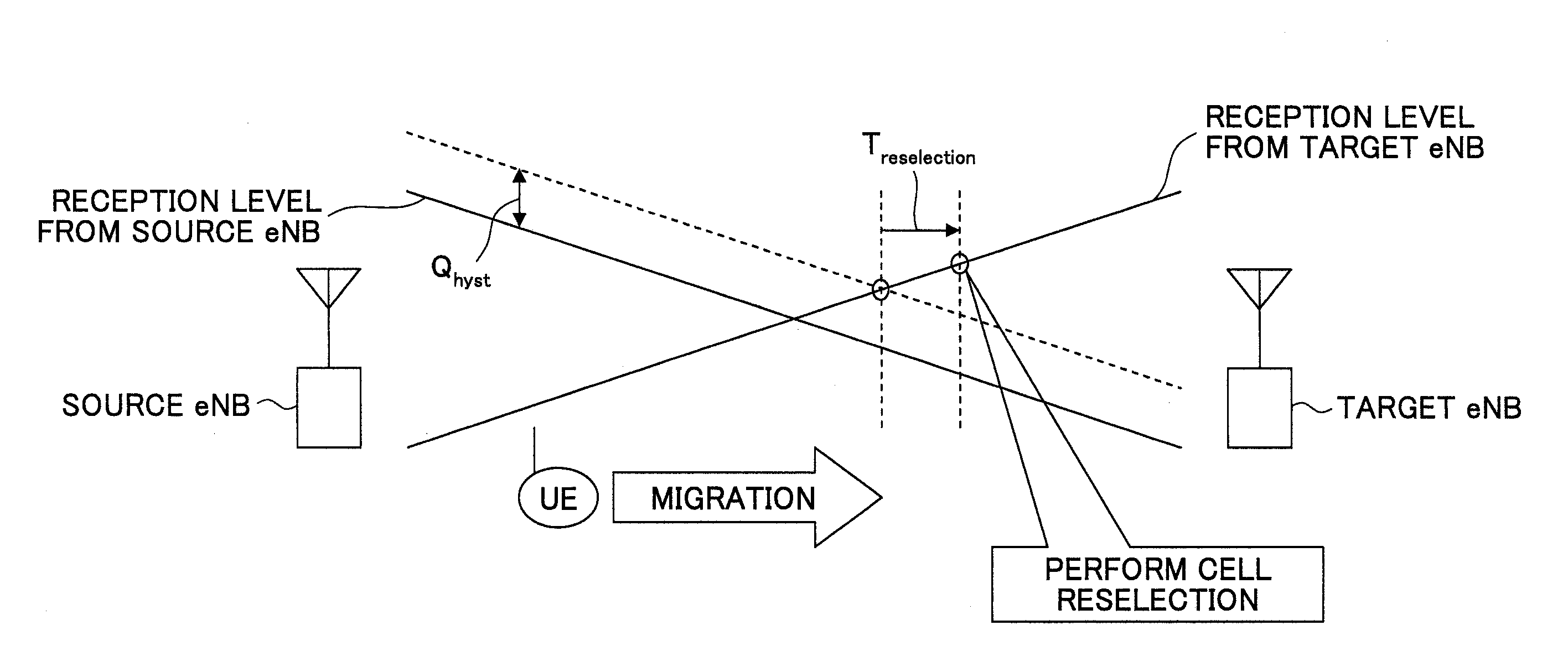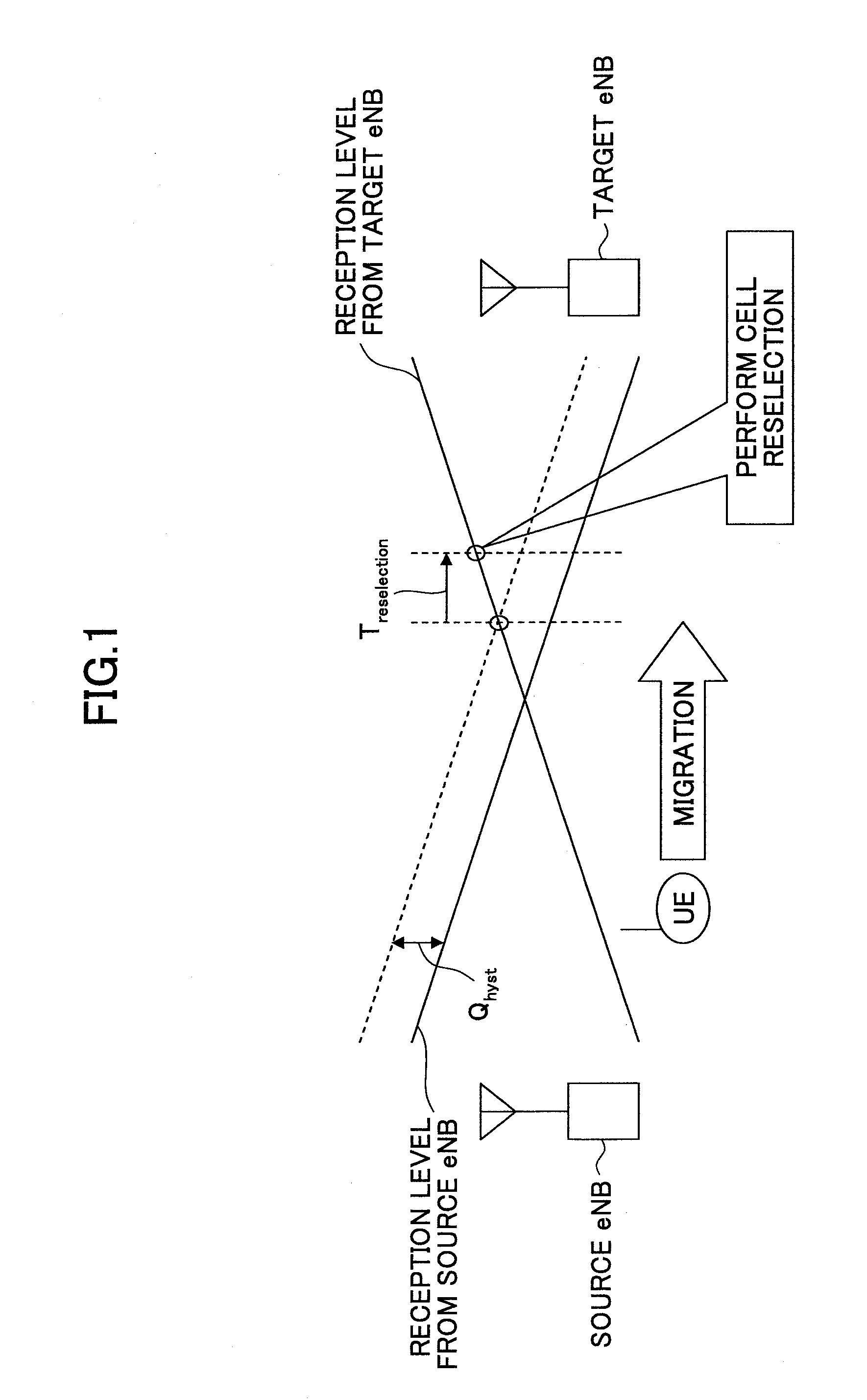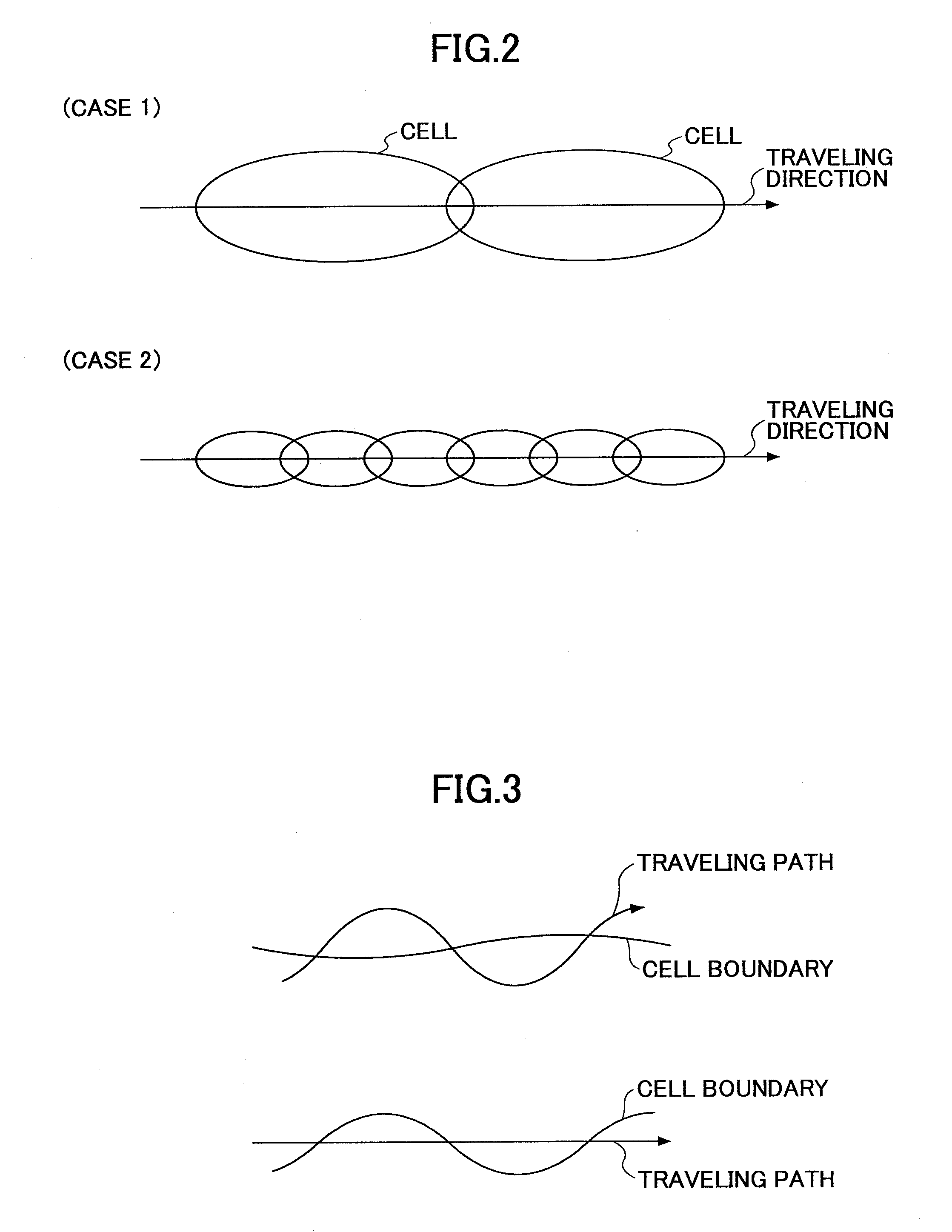User apparatus and method in mobile communication system
a mobile communication system and user technology, applied in the field of mobile communication, can solve the problems of processing workload, affecting battery energy consumption, unnecessary cell reselection,
- Summary
- Abstract
- Description
- Claims
- Application Information
AI Technical Summary
Benefits of technology
Problems solved by technology
Method used
Image
Examples
first embodiment
[0033]FIG. 4 is a flowchart illustrating an exemplary operation according to the first embodiment. The illustrated flow is performed in a user apparatus for use in a mobile communication system. The flow starts with step S1 for state initialization. Before proceeding to subsequent steps, the user apparatus at least receives broadcast information BCH from a base station apparatus (serving base station or source base station) for a resident cell and obtains parameters for determining evaluation criteria on cell reselection. Specifically, the parameters may include a hysteresis threshold Qhyst a time to trigger Treselection, a cell selection counting period TCRmax, a cell selection counter threshold NCR, a mobility monitoring period TFD, a Doppler frequency threshold FDthresh and other parameters.
[0034]At step S2, it is determined how many times cell reselection has been performed for the cell selection counting period TCRmax before the present time. In other words, it is determined ho...
second embodiment
[0051]FIG. 7 is a flowchart illustrating an exemplary operation according to the second embodiment. In the first embodiment, a user apparatus has two migration states, and evaluation criteria on cell selection are set to be suitable for each of the migration states. In the second embodiment, a user apparatus has three migration states, and evaluation criteria on cell selection are set to be suitable for each of the migration states. For example, a fast migration state may be associated with about 100 km / h. For example, a medium migration state may be associated with about 50 km / h. Similarly, four or more migration states may be provided.
[0052]The flow starts with step S1 where state initialization is performed. A user apparatus receives broadcast information BCH from a base station apparatus for a resident cell and obtains parameters for determining evaluation criteria on cell reselection.
[0053]At step S2, it is determined how many times cell reselection has been performed for a cel...
third embodiment
[0068]In the third embodiment of the present invention, it is determined whether to modify and use frequency of adjacent cell search and measurement frequency of reception signal strength for adjacent base stations depending on whether the first and second conditions are satisfied at a user apparatus. The first and second conditions correspond to the conditions as determined at steps S2 and S3 in FIG. 4. For standby or communication at a more suitable base station, the user apparatus performs adjacent cell search periodically and measures reception signal strength for adjacent base stations. From the viewpoint of battery energy savings, when the reception signal strength for a currently serving base station (waiting base station or communicating base station) is higher than or equal to a threshold Ssearch, cell reselection might be less necessary (lower likelihood of detection of such a more suitable base station). Thus, while the reception signal strength for the currently serving ...
PUM
 Login to View More
Login to View More Abstract
Description
Claims
Application Information
 Login to View More
Login to View More - R&D
- Intellectual Property
- Life Sciences
- Materials
- Tech Scout
- Unparalleled Data Quality
- Higher Quality Content
- 60% Fewer Hallucinations
Browse by: Latest US Patents, China's latest patents, Technical Efficacy Thesaurus, Application Domain, Technology Topic, Popular Technical Reports.
© 2025 PatSnap. All rights reserved.Legal|Privacy policy|Modern Slavery Act Transparency Statement|Sitemap|About US| Contact US: help@patsnap.com



